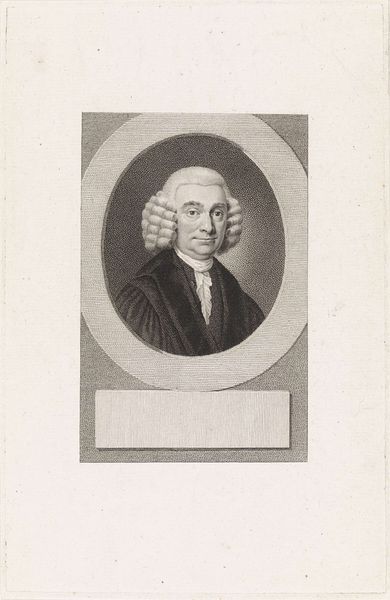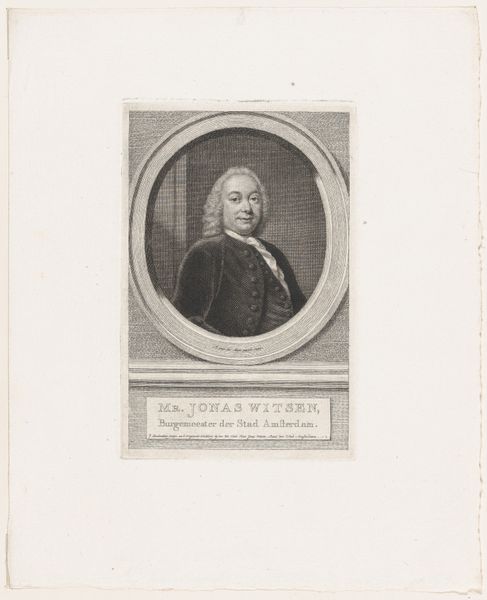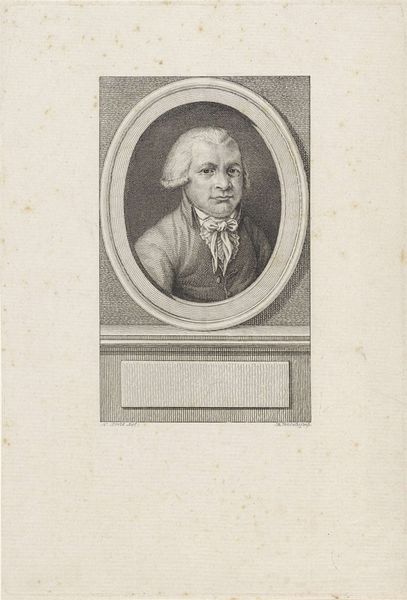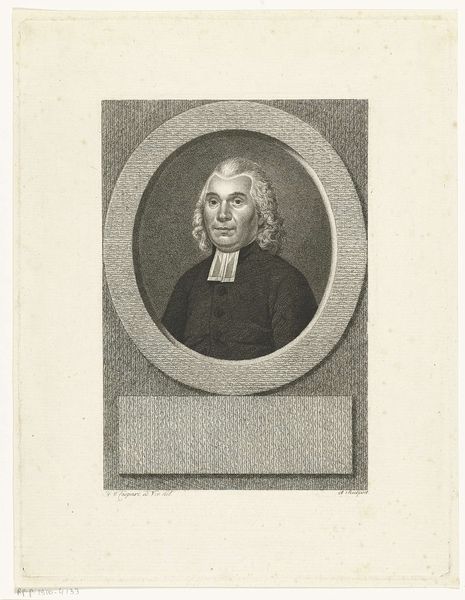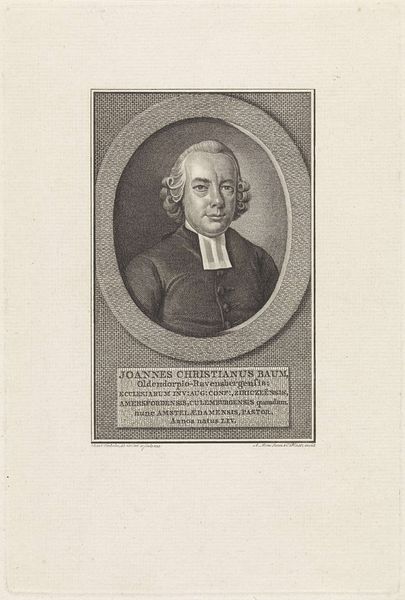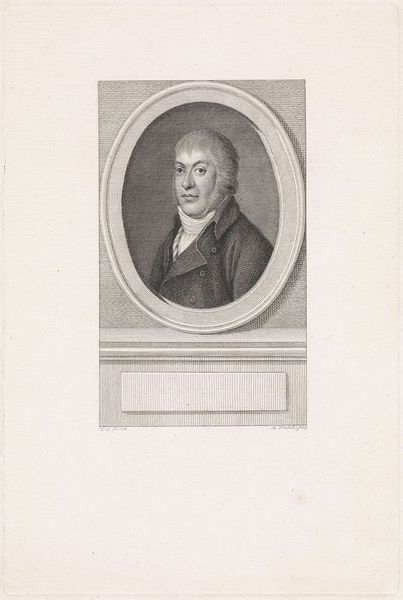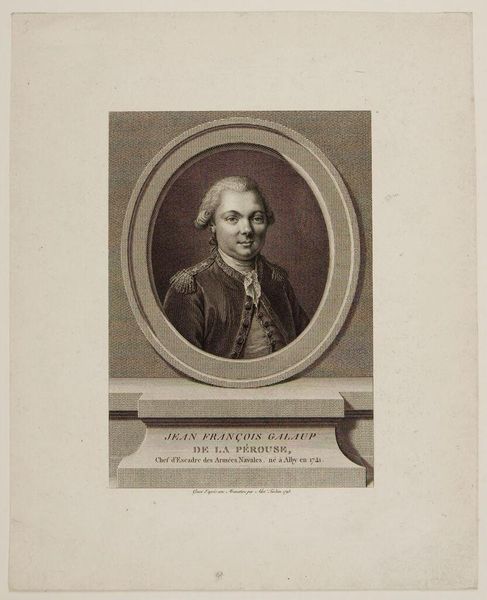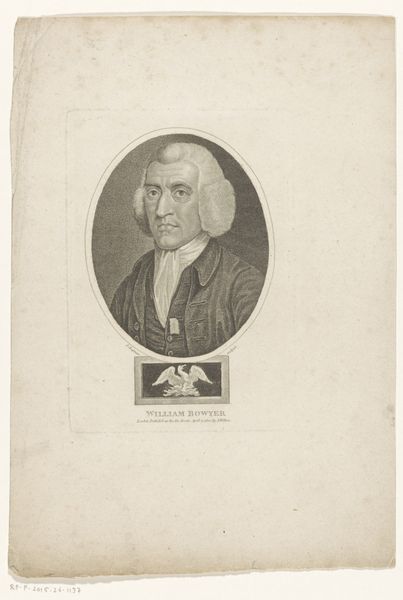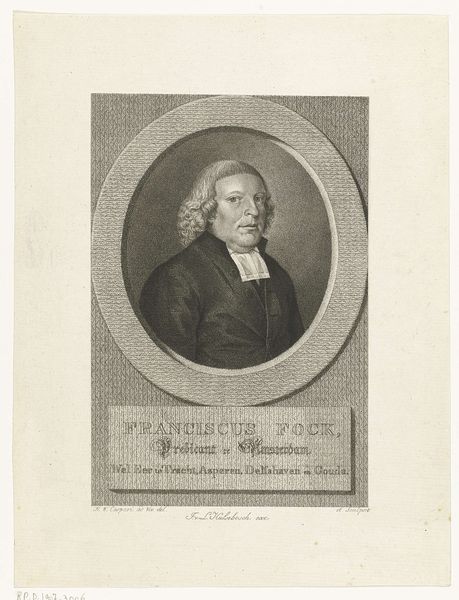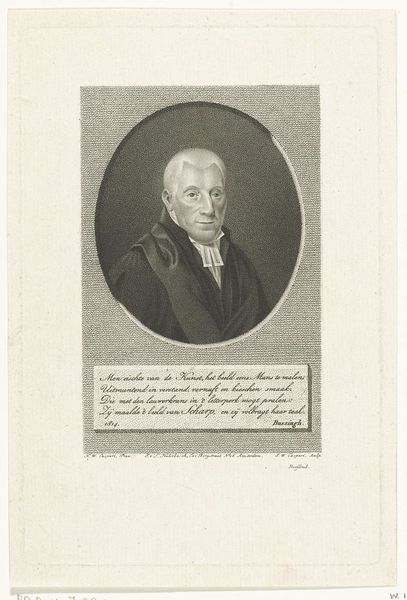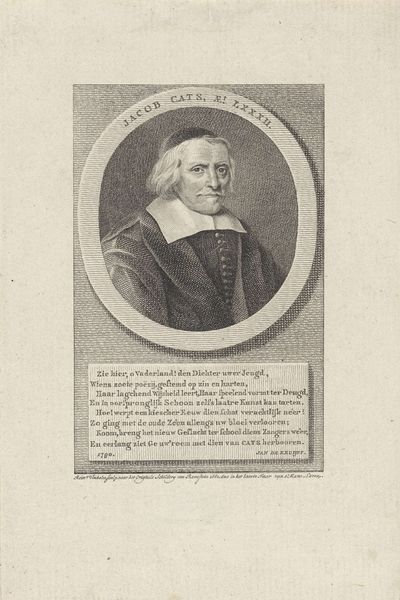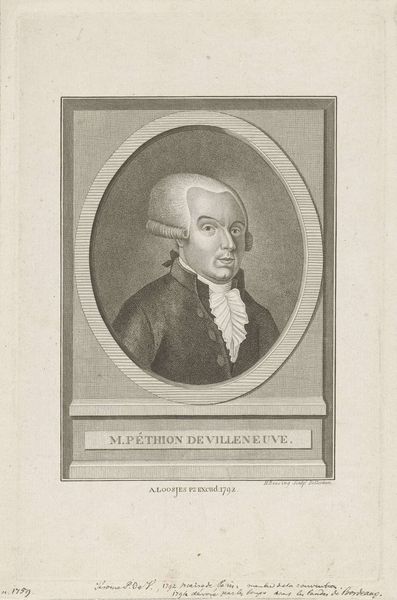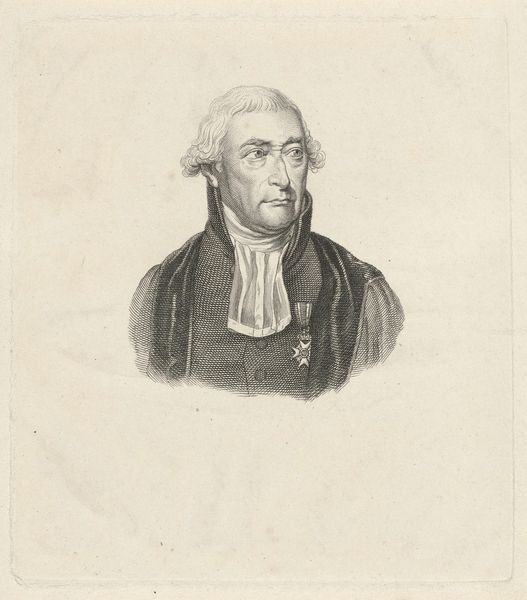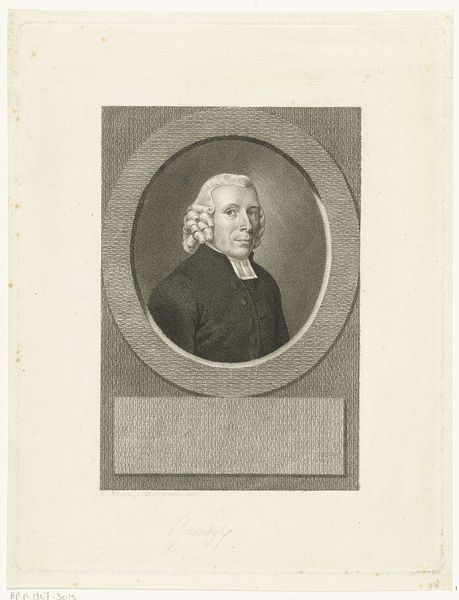
print, engraving
#
portrait
#
neoclacissism
# print
#
engraving
Dimensions: height 235 , width 170 mm
Copyright: Rijks Museum: Open Domain
Curator: Welcome! Here we see a fine example of late 18th to early 19th century portraiture, a print titled "Portret van Joachim Nuhout van der Veen" by Reinier Vinkeles. It’s currently housed here at the Rijksmuseum. Editor: The precision is astonishing. It’s an engraving, right? Look at the almost photographic detail achieved through those meticulously etched lines. I’m curious about the laborious process involved. Curator: Absolutely. Vinkeles was a master engraver. Note how the composition itself echoes Neoclassical ideals—that oval frame within a rectangular form, creating a sense of balance. Observe, too, the restrained use of line weight; it speaks to a clear, intellectual approach. Editor: Right. And the material speaks volumes, doesn’t it? Each tiny etched line had to be physically carved into the metal plate—I wonder how long it took and the socio-economic standing it implied, the kind of dedication it took to hone such skills at the service of representing power… or perhaps an ideal. Curator: Indeed. One could see the engraving technique itself reflecting the Enlightenment’s emphasis on reason and order—a desire to categorize and represent the world with clarity. This portrait, in its composition and style, emphasizes those principles. Consider, even, the blank background forcing the viewer to engage primarily with the sitter. Editor: And let’s consider the implications of a print—a multiply reproducible image, a shift from the singular painted portrait. This engraving democratizes portraiture, even though it still represents a figure of stature, doesn’t it? Think of the avenues through which that engraved image would travel in the late 1700s and the early 1800s. Curator: A compelling perspective! Vinkeles’ command of line, however, renders the subject not merely present, but almost statuesque. Editor: Right. We can explore art from different entry points—studying the relationship between the artist’s skill and societal standing allows us to gain insights into how power dynamics play out, beyond art's visual appearance. Curator: Indeed! Whether analyzing line or lathe, exploring different ways into a work creates space to analyze its visual language.
Comments
No comments
Be the first to comment and join the conversation on the ultimate creative platform.
